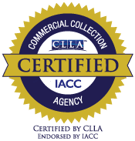
By mastering cash flow management, businesses can avoid the pitfalls of cash shortages, which can lead to operational disruptions and missed opportunities. Optimizing working capital, a key component of cash flow management, can significantly enhance your business's ability to thrive in a competitive market.
Proper management of working capital and cash flow means your business has the necessary liquidity to cover short-term expenses, invest in growth initiatives, and seize new market opportunities, ultimately paving the way for sustained success and expansion.
Understanding Working Capital and Its Importance
In accounting terms, working capital is the difference between a business's current assets and liabilities. It measures a company's overall liquidity and financial health. When an organization has enough working capital, it can easily pay short-term expenses and liabilities, thus maintaining smooth daily operations.
Current assets include cash, accounts receivable, short-term investments, and inventory—all of which are expected to be converted to cash within a year. On the other hand, current liabilities encompass any expenses that must be paid within the same period, such as accounts payable, income taxes, and other bills. The formula for working capital is straightforward: Working Capital = Current Assets—Current Liabilities.
How Working Capital Affects Business Operations
The level of working capital directly impacts a business's ability to function effectively. It ensures that a company can pay its employees, purchase materials, and cover basic operational costs. Even a profitable business may struggle to meet its short-term obligations without sufficient working capital, leading to operational disruptions.
For B2B businesses, efficiently managing working capital affects their ability to invest in product development, marketing, and other growth drivers. A lack of working capital can delay projects, affect vendor relationships, and even result in missed opportunities.
Strategies to Improve Working Capital
Improving working capital involves increasing assets and reducing liabilities. Here are some strategies to achieve this:
- Optimize Inventory Management: Ensure inventory levels align with sales forecasts to avoid overstocking or stockouts.
- Efficient Accounts Receivable Process: Use invoicing and ERP systems to streamline the accounts receivable process and ensure timely collections.
- Negotiate Payment Terms: Work with suppliers to negotiate better payment terms, allowing more time to pay off liabilities.
- Expense Management: Regularly review and reduce unnecessary expenses to reduce liabilities.
Increasing Cash Collections and Reducing DSO
Days Sales Outstanding (DSO) is a critical metric for measuring how quickly a business collects cash from its customers. Businesses should focus on reducing DSO to improve working capital.
- Measure Current DSO: Understand your existing DSO to identify areas for improvement.
- Regular Invoicing: Send invoices promptly and ensure they are accurate and complete.
- Proactive Follow-Ups: Send reminders to clients before invoices are due to encourage timely payments.
- Monitor Client Payment Behavior: Identify clients who frequently delay payments and take necessary action, such as working with a debt collection agency to collect overdue invoices.
Investing in Business Growth Through Effective Cash Flow Management
Effective cash flow management allows businesses to reinvest in their growth. With improved working capital, businesses can fund new projects, expand operations, and take advantage of market opportunities without worrying about meeting short-term financial obligations.
By optimizing working capital, B2B businesses can ensure they have the liquidity needed to sustain and accelerate growth, ultimately leading to long-term success.




